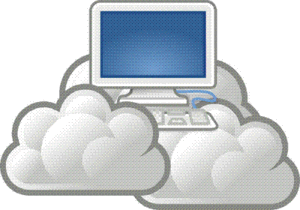Rachel Dines| Informationweek
What do cloud gateways, emergency communications tools, and disaster recovery as a service (DRaaS) all have in common? All are changing the way businesses run their continuity programs. The products that make up the business technology resiliency market landscape historically have been fragmented and ill-defined, despite the fact that the products share a common mission: improving uptime.
Although no organization is bullet proof, understanding the business value of these technologies and where they fit into your environment is key to enabling the always-on, always-available extended enterprise. To help you develop your strategy for business technology resiliency for the next few years, Forrester has identified eight disruptive technologies that infrastructure & operations (I&O) professionals must keep on their watch list for 2013 and beyond. They are file sync and mobile access, cloud-to-cloud backup, cloud-based disaster recovery (DR) services, cloud gateways and connectors, continuity automation, hypervisor replication, virtualized continuity tools, and automated communication and notification tools. Consider how each of these might factor into your plans:
1. File Sync And Mobile Access.
These can augment operational backup for your endpoints. Initially brought into many enterprises via consumer offerings, file sync has nevertheless rapidly permeated the industry. In a survey of almost 500 enterprise IT decision-makers, Forrester found that 24% already are using file synchronization services, with an additional 23% planning to adopt.
As these technologies continue to converge with more traditional endpoint backup, consider solutions that can solve the challenge of both information access and protection. Ignore this trend and risk your customers going around you to consumer-grade solutions that could result in data leaks.
2. Cloud-To-Cloud Backup.
hances are you already have some critical applications delivered in a SaaS model, and in the future you will begin to host applications on other cloud platforms. Yet the majority of I&O pros have not considered how they are protecting the data from those systems. Look at existing applications hosted in the cloud and investigate how they protect the data, if at all. For all future applications that you consider sending to the cloud, develop a cloud-to-cloud backup plan.
3. Cloud-Based DR Services.
Cloud-based DR services are drastically changing the way enterprises consume DR services across the board. If you’re a long-time consumer of traditional DR services, cloud-based alternatives could offer you significant cost savings. If you’ve always run DR in-house, cloud services offer an alternative if you’re running low on capacity at your DR center, want to reclaim it for other purposes, or have a remote site that needs protection.
4. Cloud Gateways And Connectors.
Gateways and connectors can turn cloud storage from pipe dream to reality. For I&O pros who want to capitalize on the economics of cloud storage but struggle with the data movement, cloud gateways and connectors are bringing the cloud a little bit closer. Are you tired of purchasing expensive pairs of disk libraries, one for the production site and the other for the recovery site? A common use of cloud gateways is for disk-to-disk-to-cloud backups to quickly get secondary copies of backups off site.
5. Continuity Automation.
What’s the biggest bottleneck in recovery plans? For many firms, the answer is employees — either the right people aren’t available to execute a task at the critical time or they can’t do it fast enough. This is where continuity automation can significantly drive down recovery objectives. Continuity automation can bring order to the chaos of complex, error-prone recoveries. To date, most continuity automation has been VM-centric, but look for more solutions crossing that divide in the next year.
6. Hypervisor Replication.
Storage replication is often one of the biggest ticket items in a DR environment: Between the bandwidth, the licensing, and the redundant hardware, costs can quickly skyrocket. Now I&O pros have a lower-cost alternative with hypervisor replication — while you still need the redundant hardware, it doesn’t need to match your production environment, and the licensing costs are a fraction of most array-based providers. Hypervisor replication can tame unruly storage costs.
7. Virtualized Continuity Tools.
Virtualized continuity tools can dramatically improve your availability. Virtualization unlocks the key to flexible and adaptive workloads, but they are not inherently more resilient. According to Forrester’s studies, 52% of 497 IT decision-makers today say that a critical driver behind their enterprise’s virtualization implementations is to improve business continuity and disaster recovery capabilities. Virtualized continuity tools, like virtual high availability and fault tolerance, improve the resiliency of workloads at a marginal cost increase.
8. Automated Communication Tools.
Automated communication tools can help you communicate reliably with thousands. The next generations of automated communications tools continue to make communication faster and more reliable by using many different channels, including social, but new mobile apps, location-based services, and ongoing integration with all types of communication methods will enhance situational awareness and improve response times. If you haven’t invested in an automated communication solution yet, consider it for 2013.













